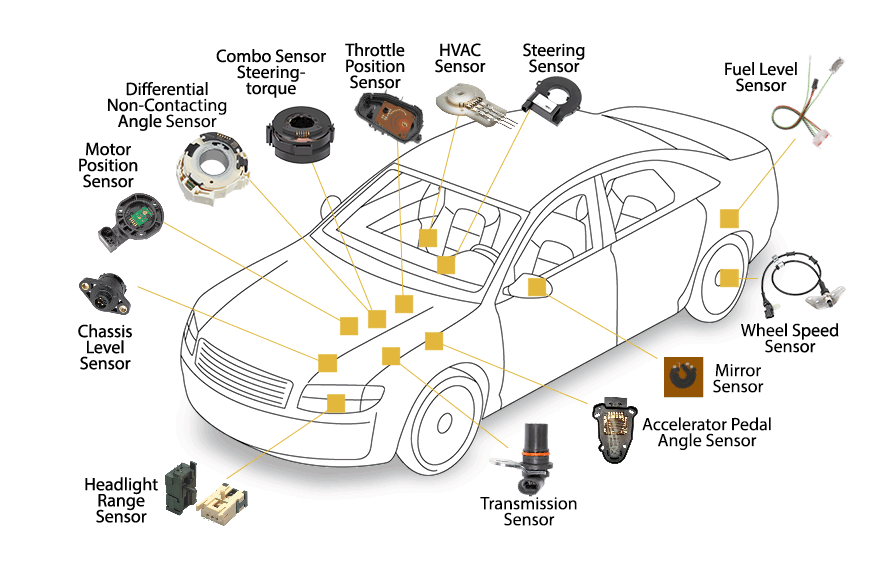Automotive electronic sensors are mainly used in braking systems, transmission systems, engine systems, speed position systems, vehicle air conditioning systems and other fields, and the main sensor types are gear, air pressure, oil pressure, steering angle, speed, position, tire pressure, temperature, humidity, air quality, rainfall, light, oxygen sensing, etc., to help drive to a safer, more comfortable, energy-saving and intelligent direction

Sensor adhesive application solutions
Sensors measure tire pressure and wheel speed, check axle load and steering angle, monitor oil level, motor temperature and fuel level. Today, there are more than 100 sensors installed in a car – and counting. Together with the associated electronic control unit, they help keep the car in the lane while driving, make the process of automatic gear shifting smoother, reduce emissions, and other features. In short, they bring greater safety, convenience, comfort, and efficiency. However, this also means that faulty sensors, such as those related to the body's electronic stability system or airbags, can be life-threatening. To ensure that this does not happen, the electronics in the electronic control unit and sensors, as well as the open contacts on the housing, must be reliably and permanently protected from damaging influences. This can be achieved with precise bonding, sealing, and potting processes and the right potting materials to achieve repeatable accuracy |
|




